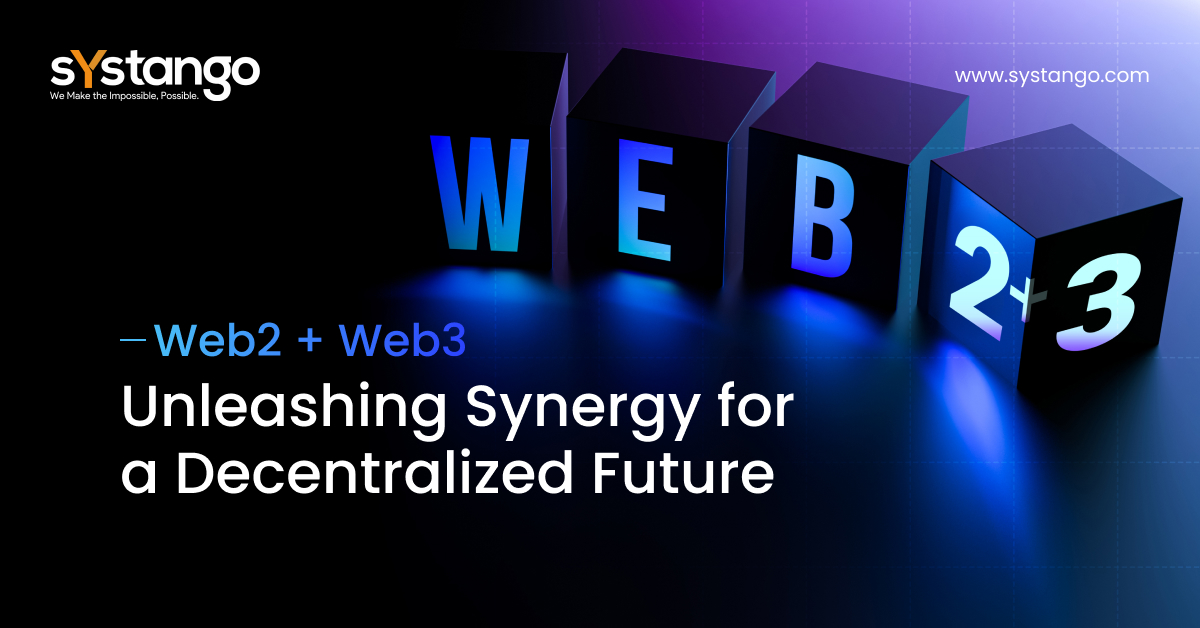Web2 + Web3: Unleashing Synergy for a Decentralized Future
Last Updated on: July 3, 2023

Amidst the fervor surrounding the advancements in Web3 technology, it’s crucial not to overlook the invaluable contributions of Web2. While Web3 offers innovative solutions and promises a decentralized future, there is merit in exploring how the existing Web2 landscape can propel Web3 to greater heights.
As a passionate advocate of Web3, I believe that blending the strengths of both Web2 and Web3 models can unlock a world of exciting possibilities. Let’s dive into this thought-provoking discussion and explore the potential of merging the best of Web2 and Web3.
Harnessing Web2 Monetization Methods:
Web3 projects can leverage the proven monetization methods of Web2 to their advantage. For instance, consider the use case of decentralized applications (DApps) in the gaming industry. By adopting in-app purchases and subscription models, DApps can tap into revenue streams that users are already comfortable with, enabling seamless transactions and providing an immersive gaming experience.
User-Friendly Interfaces for Smooth Onboarding:
One of the challenges to the mainstream adoption of Web3 is the complexity of its interfaces. However, by incorporating user-friendly interfaces and smooth onboarding processes synonymous with Web2, we can bridge the gap and make the transition to Web3 effortless and inviting. A practical use case would be decentralized finance (DeFi) platforms. By simplifying the user experience, enabling intuitive interactions, and ensuring seamless integration with existing financial systems, we can attract a broader audience to participate in DeFi and unlock the potential of decentralized banking and investing.
Learning from Web2’s Scalability Techniques:
Web3 projects can draw inspiration from the scalability techniques employed by successful Web2 platforms. Consider the use case of blockchain-based supply chain management. By integrating effective scaling solutions from Web2, such as cloud computing and distributed storage, supply chain networks built on Web3 can handle increased demand, ensure real-time tracking, and create transparent and auditable supply chains.
Forging an Ecosystem that Thrives:
As we embark on the Web3 revolution, it’s essential to acknowledge the valuable lessons and successful models that Web2 has already established. By merging the strengths of both worlds, we can create an ecosystem that thrives like never before. Another use case to consider is digital identity management. By combining Web2’s secure and user-friendly identity verification processes with Web3’s decentralized and self-sovereign identity systems, we can empower individuals to control their identities while ensuring utmost privacy and security.
Integrating Web2 and Web3 is a thought-provoking concept with immense potential. By adopting Web2 monetization methods, incorporating user-friendly interfaces, and learning from Web2’s scalability techniques, we can accelerate the growth and adoption of Web3.
As we navigate the exciting frontier of Web3, let’s embrace the best of both worlds to create a powerful and inclusive ecosystem. These use cases highlight the practical applications of merging both the ecosystems, enabling us to reshape industries, drive innovation, and create a more decentralised and equitable digital future.
What are your thoughts on merging the best of these two?
Let’s embark on this journey of exploration and innovation together!
The integration is crucial to business, and there are several examples of successful integrations. Here are some examples:

- Metis is building a hub for the entire Web3 economy in three stages, starting with a Layer 2 Ethereum scaling solution with transactions of a few seconds and a few cents. With their no-code middleware, DAC infrastructure, and other features, they are integrating the best of Web2 and Web3
- Directual is a no-code platform that allows users to make their own Web2 and Web3 applications by taking the best from both worlds. They offer a short guide on how to create your own application by integrating the best of both.
- Some online streaming services and games are already using Web3, which means they have successfully integrated the best of Web2 and Web3.
- Labs Latam tweeted that to bridge the gap, we need the best of both worlds.
- Forbes published an article on how bridging Web2 to Web3 means taking the best of both worlds. The article talks about how the rise of Web3 is based on the revolutionary idea of blending the advancements from Web2 with the best of Web1, spreading the decision-making power across the network.
These examples show that successful integrations are already happening, and they are crucial to the growth and sustainability of businesses in the Web3 ecosystem. By integrating the best of both worlds, businesses can create an ecosystem that is sustainable, scalable, and user-friendly.
Explore our blockchain development services & get the most of web!






